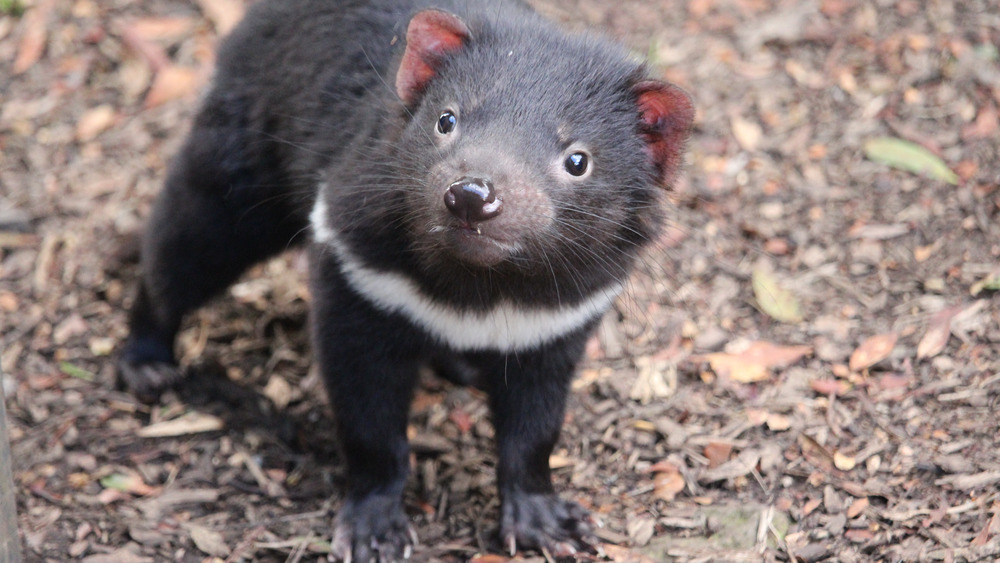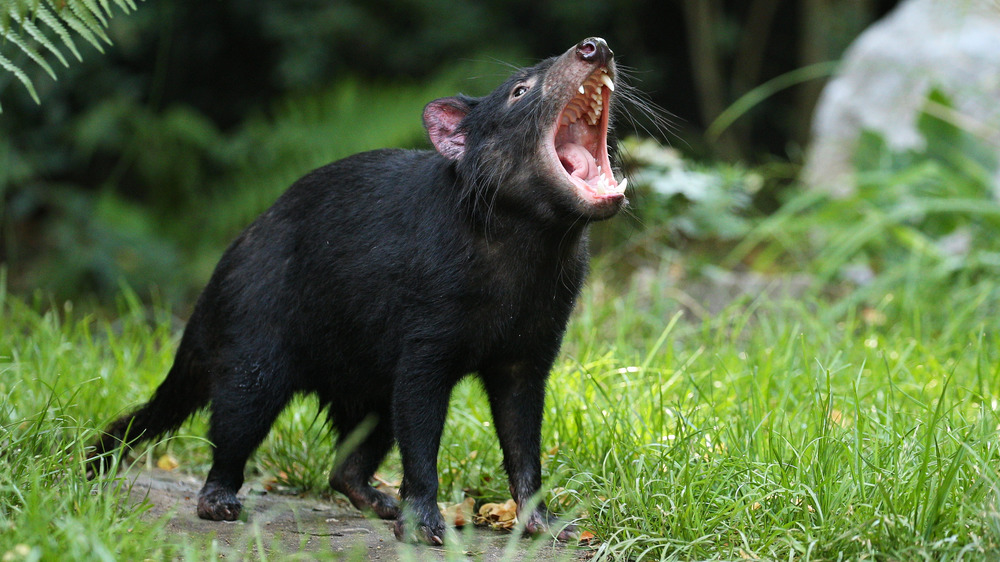How Tasmanian Devils Might Have Solved Their Extinction Problem
With the cry of "Tasmanian Devil is on the loose," this furry vortex with piercing teeth and a distinctive growl was depicted by Warner Brothers' Looney Tunes and Merry Melodies as the "most vicious animal," according to Bugs Bunny and a whole cadre of animated characters since 1954 (see the best of Taz's appearances on YouTube). In actuality, these marsupials are more fierce-looking than dangerous.
The animals, found in Tasmania, only fight when they must. According to Tasmanian Government Wildlife Management, "They will much rather escape than fight. However devils have powerful jaws and when they do bite they can cause serious injury."
Their burly looks and oversized heads, along with the devils' nighttime screams, hurt their reputation, though ... that, and their dietary habits. Early settlers disliked Tasmanian devils because the beasties ate their chickens. The devils were hunted for generations until a protection order was issued in 1941. Then the devils faced another challenge: Devil Facial Tumour Disease (DFTD). Spread when devils bite each other, the cancer killed up to 80 percent of the marsupials, reported Science. By 1996, researchers were tracking the disease's progression as devils passed the cancer cells to one another by biting during fights over mating and food.
The publication, though, believes the remaining 15,000 devils might not face extinction. Evidence points to devils infecting fewer of the breed and that this "could mean the disease may disappear over time." The cancer itself might also be mutating towards a less virulent variety.
The devil begins beating its disease
DFTD was complex, with five genomic versions — three of them widely spread by the devils, according to Elizabeth Murchison of the University of Cambridge, She and her team looked at 600+ tumor samples gathered from 2003-2018.
According to Science, each devil was infecting at least 3.5 others in early 2000. "But transmission has slowed recently, with some animals not passing DFTD on at all," wrote the publication. Some researchers hypothesize that fewer devils mean reduced contact, and that's the reason for the reduced rate.
A study from Proceedings of the Royal Society B said that behavior could also account for the reduction. Two University of Tasmania researchers, Rodrigo Hamede and David Hamilton, collared 22 devils for six months and looked at their devil contact. They saw that infected devils stopped interacting with others as they sickened. "The fact that they behave in this way is likely to have a big impact on disease dynamics," Hamilton told Science. Their work was followed up by other researchers, reports Science, that confirmed the lower population rate of the devils seemed to slow the disease's spread and that "the curve has flattened."
According to The Guardian, Andrew Storfer, a Washington State University biologist from Washington State, said in a statement, "I think we're going to see continued survival of devils — initially at lower numbers and densities than original population sizes, but extinction seems really unlikely."
Good news for the 15,000 devils remaining in the wild.

